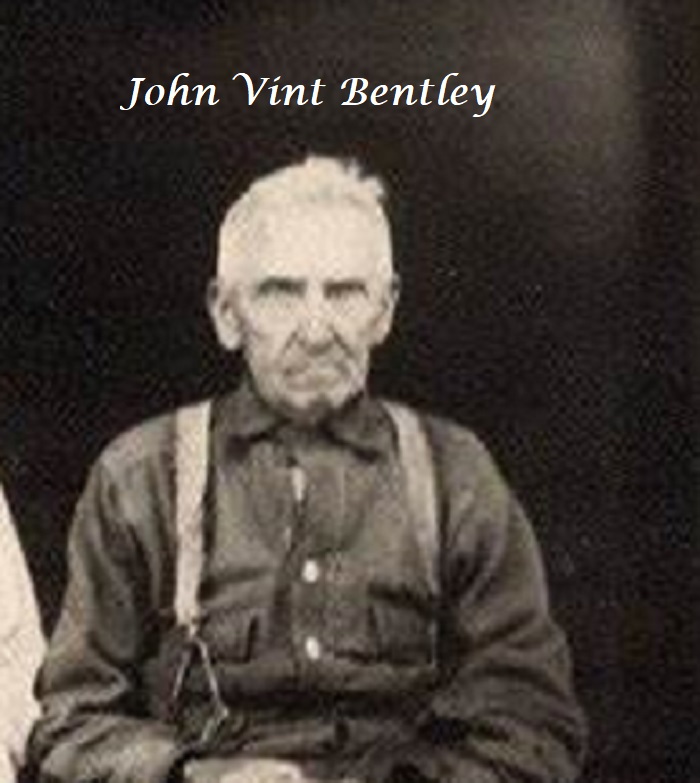This is a record of the testimony as given by John Vint Bentley the Kentucky Magistrate who stood as a witness at the Doctor Marshall Benton Taylor trial.
Special Note
Please Note— Part of this story, the questions asked of the witness are fictional. Because at the time of the Taylor trial, short-hand reporting had not come into popularity nor was court reporting efficiently done. In making a transcript of evidence, to be used in an appeal to the State Court of Appeals.
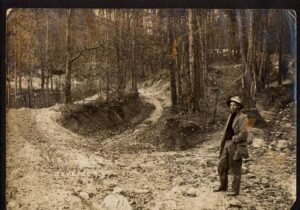
The Judge would write the appeal. The lawyers would write out the evidence or testimony given by each witness, in a narrative style. These transcripts were not done in the present-day question and answer style as only the answers given by the witness was recorded.
If the lawyer’s transcripts did not agree on a testimony given by the witness. The judge would then write the questions which caused the disputed evidence in the transcript of the trial. This is done only once in this transcript. But according to Mr. Johnson there were 12 exceptions that were supposed to be sent to the appellate court with the transcript. These exceptions, whatever they were, never made it to that court and have now been lost to time.
THE TESTIMONY OF JOHN VINT BENTLEY, witness for the commonwealth.
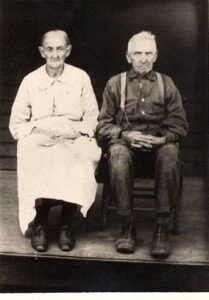
John Vint Bentley was a magistrate in Kentucky and the owner of a small country store that was located at the foot of Pine Mountain somewhere close to where Sweet Water is today. The story goes that He and Virginia native Robert Mullins had conducted the crime scene investigation of The Pound Gap Massacre. It is also of importance to note that one and a half to two hours earlier, the Mullins party had stopped at his general store and purchased a can of peaches.
Summary of the Testimony
Specifically, the Mullins party had met Jane and Ira’s mother Martha Mullins at John Bentley’s store. Whether or not this meeting was pre-planned is anybody’s guess. However, hindsight being 20/20 there was a small altercation at the meeting. Jane Mullins first wanted, then insisted that her and Wilson’s daughter Amorinda or Mindy be left in the custody of her grandmother. Eventually her Father Wilson interceded on the behalf of Jane, and bribed Mindy to accompany her grandmother by purchasing her that can of peaches.
John Bentley’s testimony went pretty much the way the testimony of Robert Mullins had gone, with a few exceptions. He gave testimony regarding his residence and to when he had arrived at the crime scene. He testified that he was not the first to arrive and that when he got there everyone in the Mullins party were dead.
He then testified that they took the deceased back to Kentucky to bury them. And goes on to testify that they had held an inquest over the bodies in Kentucky. John Bentley was then asked about the condition of Ira Mullins body, and he reports that Ira had sustained eight bullet shots.
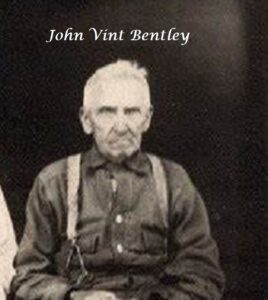
Bentley was then asked about the ambush site and the rock pile from where the ambushed was staged and he replied by saying that he had examined the ground where they were shot and that he saw the place where the parties are said to have stood that did the shooting.
When asked about the specifics about the rock pile he testified that a few cartridge hulls were found in the place, and that the place was made up of two rocks, formed by nature, with an opening between them, and other rocks built up around them.
He went on to say that there were a few bushes piled up in front of the rocks and described them as being (black pine, maple and chestnut). Bentley the describes the bushes as seeming to be wilted. He then states that the blind would conceal a man if he was sitting down or on his knees, but you would be able to see him when or if he was standing up, from his breast up; there was an open space between the rocks and the road except the brush stuck up in front of the rocks. He then reports that there was ample open space in the brush to shoot through.
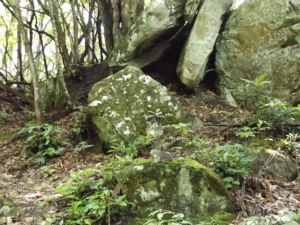
When asked about the bullet shells he states that he did examine them when they were found and then is asked about an account book which was taken from the body of John Chappell at the inquest.
The prosecution then switched up the questions asking about the condition of the bodies of Louranza Mullins and John Chappell. This line of questioning included asking about the age, occupation and living arrangements of John.
John Vint Bentley’s testimony is finished up with questions about Ira Mullins’s business which he describes as trading in liquor. He also testifies that Ira had the reputation of always carrying a good deal of money. The questioning then reverts to asking about more questions about the ambush site and he describes the brush blind as being 20 or 25 steps from the road. He is asked about the height of the rock pile which he described as four or five feet high.
John Bentley is then asked a peculiar question about the state of the brush pile in which he describes the chestnut brush as wilted and states that the weather was warm and it would have wilted in a day, but that it looked like it had been there two or three days and states that the leaves on the brush were not full size.
Problems with the Testimony
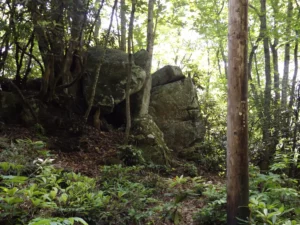
There is no note of the defense questioning John Bentley, however John Bentley had described the chestnut brush as appearing to have been wilting for a couple of days. This makes us question his testimony.
This was a well-traveled road; one would think that if this brush blind had been there for several days someone would have seen it or questioned why it had been there. Yet several witnesses testify as living close to the site and no one else is asked if they had seen or had been told about this new brush pile by the road.
What’s more is that in the often-told story, we think that this testimony is the basis for the folk tale stating that Doc Taylor and the Flemings had been staking out the ambush site for several days. If this had been so one would think that someone would have testified as to seeing or hearing about a group of men camped out beside the road on the mountain. Yet no one does.
But to be fair to Mr. Bentley and his testimony about the chestnut brush. At the time this would have been the American Chestnut tree. This species of chestnut had become blighted by 1892 but the blight would not be discovered until 1904. This blight killed an estimated 2 billion chestnut trees in the area shown in this photo. John Sergent, who was born in 1907, once stated that when he was a small boy the mountains in and around Letcher County were full of dead chestnut trees to the point that it looked as if it was winter in July.
Thank You
We at Kentucky Tennessee Living would like to thank you for watching our series on The Killing Rock. Don’t forget to hit that like button as the more likes we receive the more likely YouTube is to suggest our videos to other viewers. Also, to receive notice when we upload a new video be sure to subscribe and click the bell notification.
We thank you for continuing to support Kentucky Tennessee Living. As we bring to you the history of the Appalachian Mountains. We must remind everyone that the story names Killing Rock: The Oft Told Tale (s) and Killing Rock: The Untold Story and Killing Rock: the Trial are all under Kentucky Tennessee Living copyright
Source Information
A Narrative History of Wise County, Virginia By Charles A. Johnson Pub. 1938
Copyright and Other Information
All photos are in the public domain unless otherwise noted. This includes photos dated before 1923. All other photos are used with permission or under the education fair use statute of the US copyright law.
Copyright 2022 Kentucky Tennessee Living
kytnliving.com/copyright-2/
Social Media Pages
For more about us, you can visit our Facebook page:
https://www.facebook.com/kytnliving
Our Twitter page:
https://www.twitter.com/KYTNLiving
Our YouTube Channel:
https://www.youtube.com/kytnliving
When we forget our past and who we are as a people, then we become who “they” say we are. ~~ David Sergent
I have attended the University of Kentucky. I have an Associates Degree from Hazard Community College and Technical School. I have also attended the University of Pikeville. I have taken several classes in Journalism as well as in the Appalachian History, Literature, and Sociology during my time at those schools.
I was born in Florida and grew up in Burdine, Kentucky. I have been married to David W. Sergent since May 4, 2013. I have two children and four grandchildren from a previous marriage. I currently live in Tennessee but my hope is to one day come back home to live in the beautiful mountains once more.


